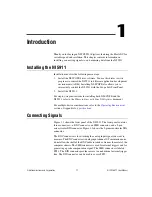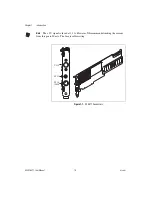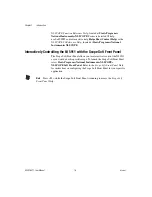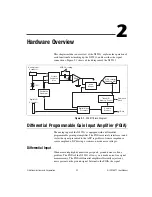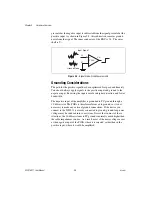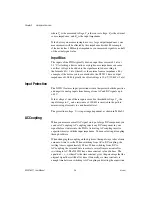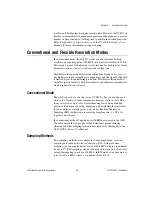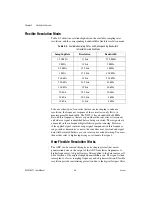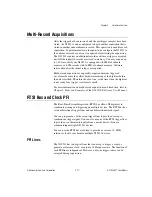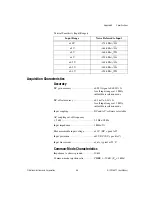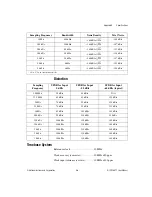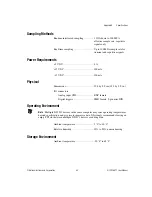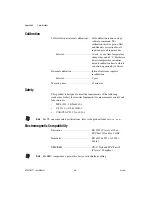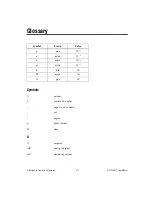
Chapter 2
Hardware Overview
©
National Instruments Corporation
2-11
Multi-Record Acquisitions
After the trigger has been received and the posttrigger samples have been
stored, the NI 5911 can be configured to begin another acquisition that is
stored in another onboard memory record. This operation is a multi-record
acquisition
.
To perform multi-record acquisitions, configure the NI 5911 to
the number of records you want to acquire before starting the acquisition.
The NI 5911 acquires an additional record each time a trigger is accepted
until all the requested records are stored in memory. You may acquire up
to 1,024 records if your NI 5911 is equipped with 4 MB of onboard
memory, or 4,096 records with 16 MB of onboard memory. Software
intervention after the initial setup is not required.
Multi-record acquisitions can quickly acquire numerous triggered
waveforms because they allow hardware rearming of the digitizer before
the data is fetched. Therefore the
dead time
, or the time when the digitizer
is not ready for a trigger, is extremely small.
For more information on multi-record acquisitions and dead time, refer to
Chapter 5,
Tasks and Examples
, of the
NI-SCOPE Software User Manual.
RTSI Bus and Clock PFI
The Real-Time System Integration (RTSI) bus allows NI digitizers to
synchronize timing and triggering on multiple devices. The RTSI bus has
seven bidirectional trigger lines and one bidirectional clock signal.
You can program any of the seven trigger lines to provide or accept a
synchronous trigger signal. You can also use any of the RTSI trigger lines
to provide a synchronization pulse from a master device if you are
synchronizing multiple NI 5911 devices.
You can use the RTSI bus clock line to provide or accept a 10 MHz
reference clock to synchronize multiple NI 5911 devices.
PFI Lines
The NI 5911 has two digital lines that can accept a trigger, accept or
generate a reference clock, or output a 1 kHz square wave. The function of
each PFI line is independent. However, only one trigger source can be
accepted during acquisition.

